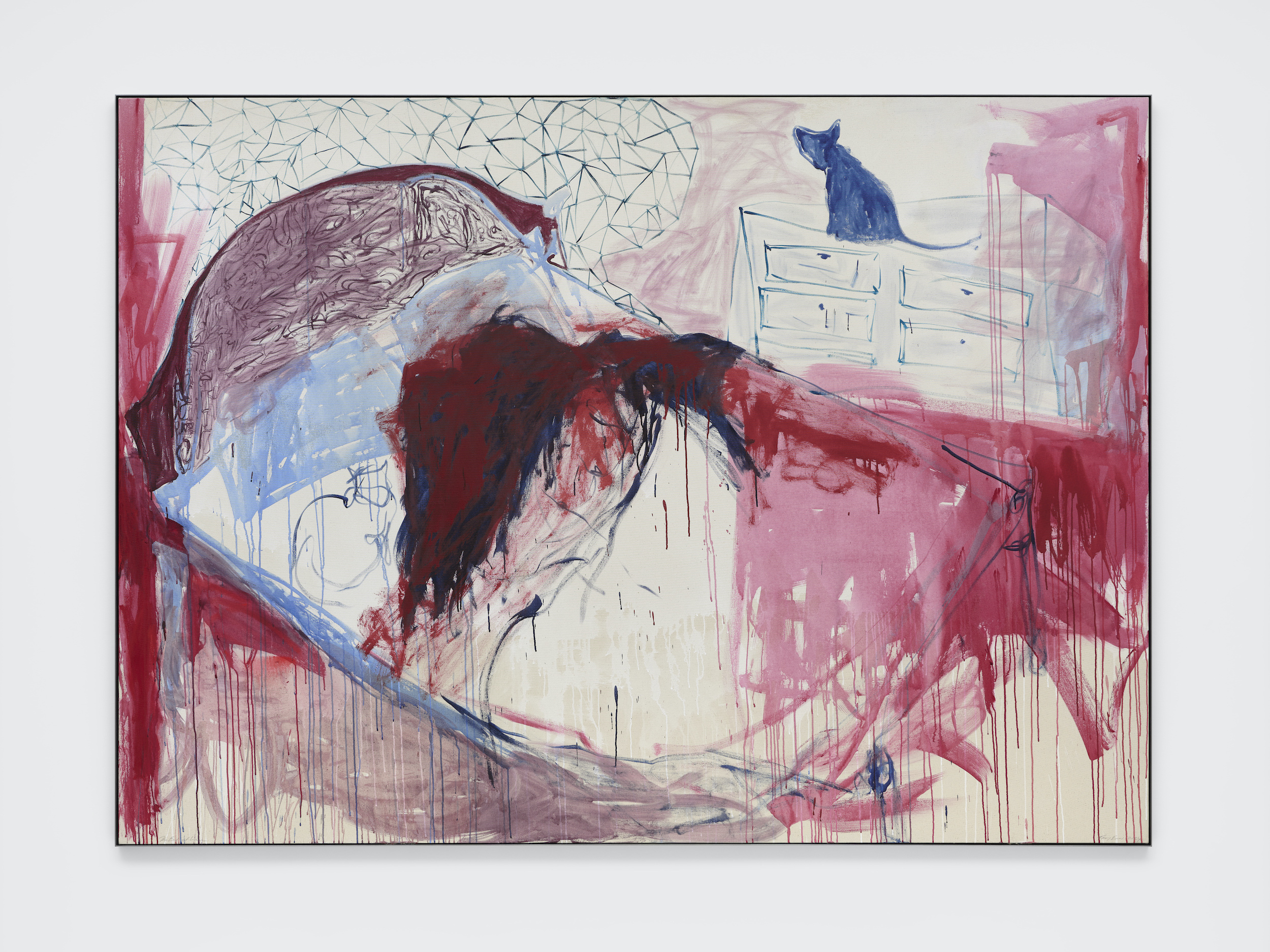LONDON — At first glance, Tracey Emin’s I followed you to the end at White Cube resembles her last exhibition at the gallery.
The emotive works in A Fortnight of Tears, five years ago, were influenced by the recent death of the artist’s mother. Her current show also centers on a traumatic event — Emin received a terminal diagnosis of advanced bladder cancer in 2020 and underwent major surgery followed by six months of bedrest. Her new work sweeps up the themes she’s centered since art school in the 1990s but with the weight of maturity. Now 61, her brush with death brought urgency to her production. Besides hitting the studio hard, she established a new art school and residency program in her coastal hometown of Margate, which opened in 2023.
“When you’ve been seriously ill and you come out the other side, you really don’t fuck around anymore, ever,” Emin stated in a 2023 interview.
Despite the museum scale and blue-chip quality of the 40 paintings and two sculptures on view (all 2024), this exhibition feels both more insistent and more intimate than the previous one. Emin is fueled by a need to excavate her interior landscape, to make the things we don’t easily find a means of expressing more approachable. She brings pain to the surface, not via the theatricality of some artists but through a serialized secretion, an oozing of emotion from canvas to canvas that allows nuances to emerge. The gestural figures float in elegant compositions, creating a strangely beautiful balancing act.
The exhibition opens with a long hallway of 13 small acrylic works on canvas, most depicting Tracey in her bed, alone or with another person, and often with a cat perched nearby. This hallway flickers as a preamble, dimly lighting the way to the first room, where the large paintings explode.
Emin’s 2019 show included a room-sized installation of photographs of her fitfully trying to sleep; 50 huge prints showed closeups of the artist in bed. This theme, which began with her infamous 1998 “My Bed” installation, continues here in works such as “More Love Than I Can Remember.” Using only blue and black, she renders the sprawl of her body in bed, a cat sitting on an outlined dresser to the side. The thin paint fidgets on exposed canvas, while a series of drips near the bottom trickle down like an echo of time passing in the darkness. The figure is naked with legs splayed, as if dreaming about a time when physical connection was less fraught.

Alternating between single and embracing figures, most of the show’s 25 large-scale paintings are staged in the interstitial space of sleeplessness. Approaching the white canvas with a brush but no plan, Emin’s works — all with no more than three colors — are a type of exhumation wherein a stream of poses flows through emotional equations, some anguished and some tender. She rephrases the artistic trope of the reclining nude where women were lovers, goddesses, or objects of display. “The Bridge” is right out of Manet’s playbook, but Emin’s figure floats in atmospheric, murky whites and grays on a bed framed with smeary blood reds. She is unattainable, obscured within her own reverie.
The mood changes according to her palette. The soft pink and white tones of “I Wanted Love” feel airy and resplendent. “The End of Love” brings metaphysical weight: A figure is tucked under the covers, her head buried by a thick mound of rusty red and deep blue marks, suggesting suffocating loss. A cat sits upright on the dresser, symbolizing the promise of another morning.
Periodic transitions from horizontal to vertical orientations reflect a metaphorical shift from sleep to waking life. “I Did Nothing Wrong” portrays a woman kneeling in a position of martyrdom or execution with a halo behind her head and the hint of a cross in the background. The left panel of a large diptych, “My Dead Body – A Trace of Life,” holds only the words “I don’t want to have sex because my body feels dead,” while the right shows a contorted body sinking into a field of crimson. Tucked on a side wall is “Cruel,” an image of a woman crouched naked on the ground.

“Cruel” appears to be a study for an enormous bronze sculpture, “I Followed You To the End,” in the center of the room, which further abstracts the pose into a headless, elongated torso, buttock in the air, legs extended. Prayerful, exasperated and cheeky all at once, the sculpture blithely turns the serious history of monumental bronzes by male sculptors such as Auguste Rodin into a crumpled human tissue. This inversion fuels Emin’s entire oeuvre as she insists that our interior worlds, full of fears and vulnerability, are equal in valor to externalized heroism.
The show closes with a wall-sized, one-minute loop of a closeup of Emin’s stoma (opening) in her lower abdomen, which connects to a urostomy bag that she will need for the remainder of her life. This stoma often bleeds. The visceral video, in its own screening room, was difficult to watch, even for a minute.
We need Tracey Emin in the pantheon of contemporary painters to connect her expressionist line from Egon Schiele to Edvard Munch to Louise Bourgeois while remaining tethered to her own life. Emin accomplishes what any great artist must do — turn the sacrificing of privacy into the spark of human connectivity. Otherwise, it is just decoration.


Tracey Emin: I followed you to the end continues at White Cube (144-152, Bermondsey Street, London, England) through November 10. The exhibition was organized by the gallery.

